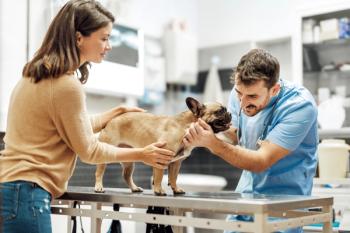
- Firstline January/February 2019
- Volume 15
- Issue 1
Telemedicine: Join, or die?
Millennials have grown up with technology and the conveniences it affords. If veterinary practices dont adapt to their expectations, they risk being replaced.
Unsure about telemedicine? If you don't lead, you'll have to follow. Telemedicine is a big buzzword in our industry right now, and with good reason. It seems that we are on the cusp of another shift in the way our clients want veterinary medicine delivered.
Banfield was ahead of its time when it rolled out wellness plans to clients in 1988, and it's taken the rest of the industry about 30 years to get on board. My hope is that we don't wait that long to embrace telemedicine, because being on the leading edge means we have the opportunity to shape what it will look like for our industry as opposed to falling into a mold created by someone else.
So, what could telemedicine look like in your practice? If it were me, I would determine a specific set of ailments that, based on the particular patient's history, I would be comfortable diagnosing over the phone. For example, let's say Fido's history showed a bad case of otitis during the summer for the past two summers. If the owner called me in June saying Fido had the classic symptoms, I would feel comfortable scripting out my usual regimen (with the understanding that I would need to see the pet if it didn't clear as expected).
Ideally, I'd be able to see my client via FaceTime, Skype or something similar. I would charge a fee for the call similar to the current exam fee, and I would have the necessary medications filled in my pharmacy and overnighted (for a fee) if more convenient for the client. There are more details to work out, of course, but that'd be the gist of it.
On average,
Katie Adams, CVPM, is director of Curriculum Development at IGNITE Veterinary Solutions.
Articles in this issue
almost 7 years ago
Share the love with your punny veterinary technician valentinealmost 7 years ago
Weird and wonderful: 5 tips for handling feline aggressionalmost 7 years ago
Surviving work and parenthood in veterinary medicineabout 7 years ago
Mommy needs to save livesabout 7 years ago
Going Fear Free? Dont get derailedabout 7 years ago
Nutrient strategies for managing those (FIC)kle FLUTD casesabout 7 years ago
How to sharpen dental scalers and curettesabout 7 years ago
Technicians and telehealth: Where we are now, and where we could goabout 7 years ago
Ask Katie: How should I handle employee reviews?Newsletter
From exam room tips to practice management insights, get trusted veterinary news delivered straight to your inbox—subscribe to dvm360.






